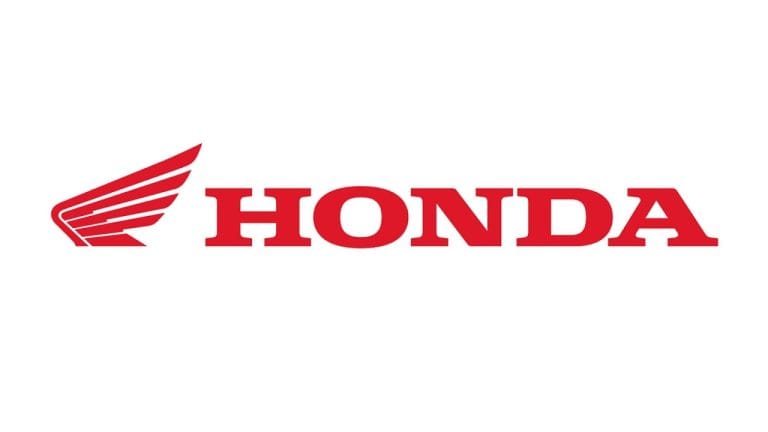Introduction
Honda’s journey from a small startup to a global powerhouse is a story of resilience, innovation, and visionary leadership. Over the years, Honda has transformed the transportation and mobility industry through cutting-edge technology, sustainability initiatives, and an unwavering commitment to quality. This case study dives into the history, strategies, and milestones that solidified Honda’s legacy as a revolutionary force.
The Founding of Honda
Soichiro Honda, a charismatic and ambitious innovator, laid the foundation of Honda in 1946. Starting as a small manufacturer of motorized bicycles, Honda focused on creating affordable and efficient modes of transport for post-war Japan.
Honda’s early days were fraught with challenges, including resource shortages and skepticism from established competitors. Yet, through persistence and ingenuity, Honda introduced the “Dream D-Type” motorcycle in 1949—a product that redefined affordability and reliability in the two-wheeler market.
Breaking into the Automotive Industry
By the early 1960s, Honda had solidified its position as a leader in motorcycles and set its sights on automobiles. In 1972, Honda introduced the Civic, a compact car designed to meet growing demand for fuel-efficient vehicles during the oil crisis.
The Civic wasn’t just another car—it was a game-changer. Featuring a revolutionary CVCC engine that complied with stricter emission standards, it positioned Honda as a leader in eco-conscious design. Competing with giants like Toyota and Ford was no easy task, but the Civic’s success proved Honda’s adaptability and engineering prowess.
Innovations in Engineering and Design
At the heart of Honda’s success lies its dedication to technological innovation. One of its hallmark inventions, the VTEC system, revolutionized engine performance by optimizing fuel efficiency and power output.
Beyond engines, Honda pioneered advancements in aerodynamics, user-friendly interiors, and integrated infotainment systems. The company’s commitment to blending functionality with style earned it a loyal customer base.
Commitment to Sustainability
Long before sustainability became a buzzword, Honda was investing in green technologies. The launch of the Honda Insight in 1999 marked one of the first hybrid cars to hit the market. More recently, Honda has focused on producing fully electric vehicles like the Honda e.
To further its commitment, Honda has invested in hydrogen fuel cell technology and solar energy research. These efforts demonstrate a forward-thinking approach to reducing the industry’s carbon footprint.
Global Expansion
Honda’s ability to understand and adapt to diverse markets has been instrumental in its global success. The company established manufacturing plants in key regions, including the United States, Europe, and Southeast Asia. By localizing production, Honda not only reduced costs but also tailored its products to meet specific market demands.
Revolutionary Marketing Strategies
Honda’s marketing campaigns are as innovative as its products. Unlike many competitors, Honda has focused on creating a narrative that resonates emotionally with its audience. Campaigns like “The Power of Dreams” emphasize Honda’s commitment to innovation, perseverance, and customer-centric values.
The company also capitalized on motorsport success to build its brand image. By associating with high-performance races like MotoGP and Formula 1, Honda has projected an image of reliability and cutting-edge engineering. Collaborations with celebrities and influencers have further strengthened brand loyalty, ensuring Honda remains a household name worldwide.
Pioneering in Motorsports
Honda’s involvement in motorsports is a testament to its engineering prowess and competitive spirit. The company entered Formula 1 in the 1960s, becoming one of the few manufacturers to achieve success as both an engine supplier and constructor. Victories in races and championships reinforced Honda’s reputation for innovation.
Similarly, in MotoGP, Honda’s dominance is unmatched, with its bikes winning numerous championships. The lessons learned on the track are directly applied to consumer products, ensuring customers benefit from cutting-edge technologies born in high-stakes environments.
Diversification of Product Lines
Honda’s ability to diversify its product offerings has contributed significantly to its longevity and stability. From motorcycles to automobiles, power equipment, and even aircraft, Honda has mastered the art of serving multiple markets.
The HondaJet, a light business jet, is a prime example of this diversification. Featuring revolutionary over-the-wing engine mounting, it set new standards for fuel efficiency and cabin comfort. This willingness to venture into new territories ensures Honda remains resilient against market fluctuations.
Adapting to Consumer Needs
One of Honda’s greatest strengths is its ability to understand and respond to consumer demands. The company constantly gathers feedback to refine its designs and offerings. For instance, Honda provides a range of customization options, from exterior paint colors to interior features, allowing customers to personalize their vehicles.
Additionally, Honda excels in after-sales service, with a strong focus on customer satisfaction. Comprehensive warranties, responsive service centers, and a robust spare parts network ensure that Honda owners remain loyal to the brand.
Crisis Management
No company is immune to challenges, and Honda has faced its share of crises, including recalls and economic downturns. However, Honda’s approach to crisis management is a case study in transparency and accountability.
For example, during the Takata airbag recall crisis, Honda took proactive measures to address safety concerns, recalling millions of vehicles and enhancing quality control processes. By prioritizing customer safety and maintaining open communication, Honda managed to uphold its reputation even in turbulent times.
Technological Leadership
Honda has consistently been at the forefront of technological innovation. Beyond vehicles, the company has made significant strides in robotics, with ASIMO—its humanoid robot—leading the way in mobility and AI research.
In the automotive space, Honda is investing heavily in autonomous driving technologies. Its development of advanced driver-assistance systems (ADAS) aims to enhance safety and convenience, paving the way for a future of self-driving cars.
Competition and Market Positioning
Competing in a crowded market is no small feat, but Honda has managed to carve out a unique position through innovation and quality. By focusing on reliability and performance, Honda has built a loyal customer base that trusts its products.
Honda’s ability to differentiate itself from competitors like Toyota, Tesla, and Ford lies in its commitment to balancing tradition with modernity. Its vehicles often strike the perfect blend of practicality and cutting-edge features, appealing to a broad demographic.
Challenges in the Modern Era
While Honda remains a leader, it faces several modern challenges. The rise of electric vehicle (EV) startups like Tesla has intensified competition. Moreover, global supply chain disruptions and semiconductor shortages have tested Honda’s resilience.
To stay ahead, Honda is accelerating its EV development and forging partnerships to secure resources. These measures ensure that Honda remains competitive in an evolving industry landscape.
Vision for the Future
Honda’s future vision revolves around sustainability and innovation. The company aims to achieve carbon neutrality by 2050, with a strong focus on renewable energy and zero-emission vehicles. Its roadmap includes ambitious plans for AI integration, hydrogen-powered vehicles, and futuristic mobility solutions like flying cars.
By staying true to its core values of innovation and quality, Honda is poised to lead the next era of the automotive and mobility industries.
Conclusion
Honda’s journey is a masterclass in resilience, innovation, and customer-centricity. From humble beginnings in post-war Japan to becoming a global powerhouse, Honda has revolutionized not only the automotive and motorcycle industries but also the way businesses approach sustainability and technology.
Honda’s story serves as an inspiration for companies worldwide, illustrating the power of vision, adaptability, and relentless pursuit of excellence.
FAQs
- What are Honda’s most significant contributions to the automotive industry?
Honda’s most notable contributions include the VTEC engine, hybrid vehicles like the Insight, and a strong commitment to sustainability through electric and hydrogen-powered cars. - How did Honda transition from motorcycles to cars?
Honda leveraged its expertise in engines and design to create compact, efficient cars like the Honda Civic, which became an instant success due to its fuel efficiency and affordability. - What is the significance of Honda’s VTEC technology?
VTEC optimizes engine performance by adjusting valve timing, ensuring a balance between power and efficiency, making Honda vehicles both sporty and economical. - How does Honda maintain its position in the market?
Honda focuses on innovation, customer satisfaction, and adapting to market trends, ensuring it stays competitive despite industry challenges. - What is Honda’s approach to sustainability and green energy?
Honda invests heavily in renewable energy, hybrid and electric vehicles, and hydrogen fuel cells to reduce its environmental impact and achieve long-term sustainability goals.




